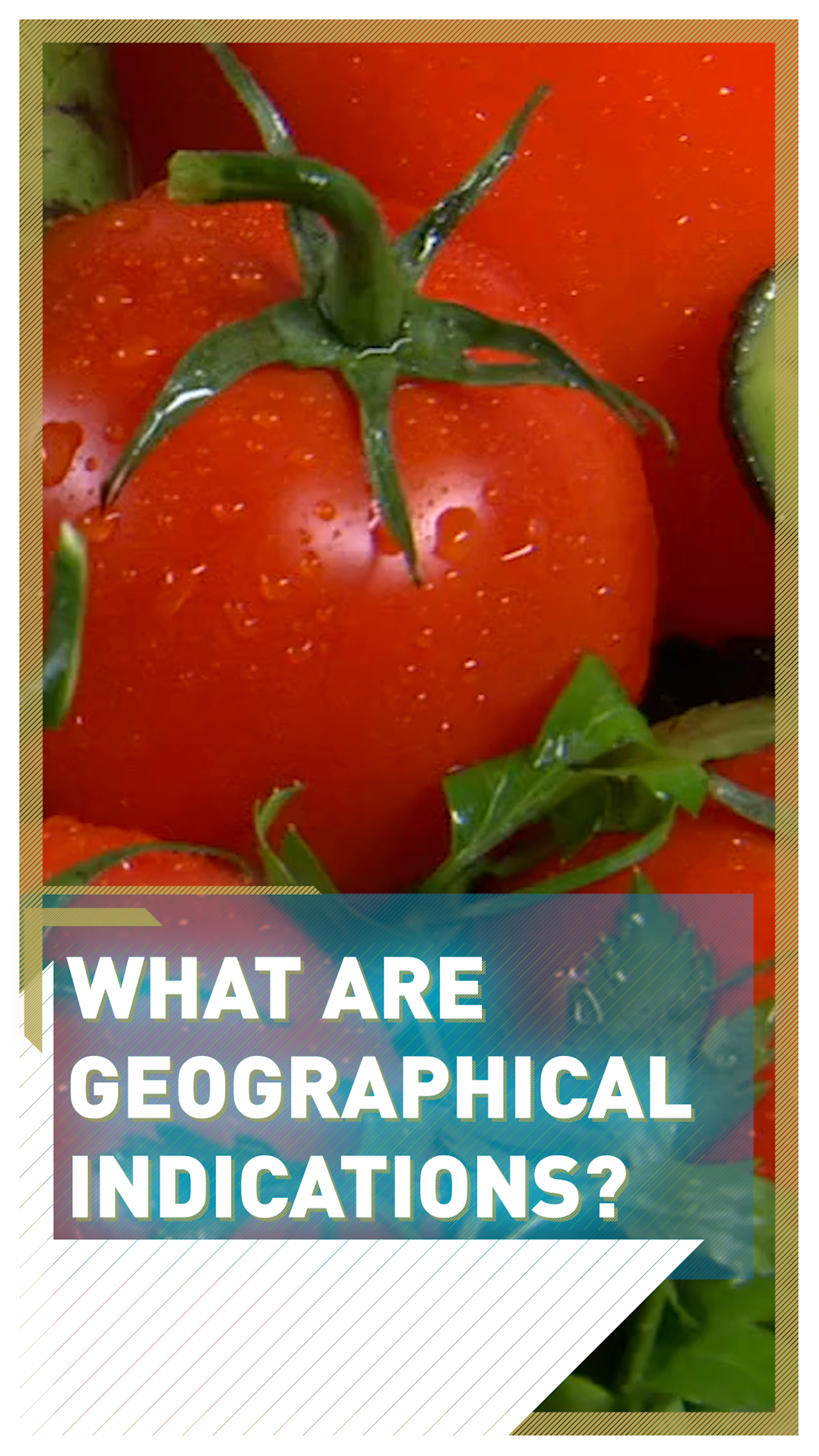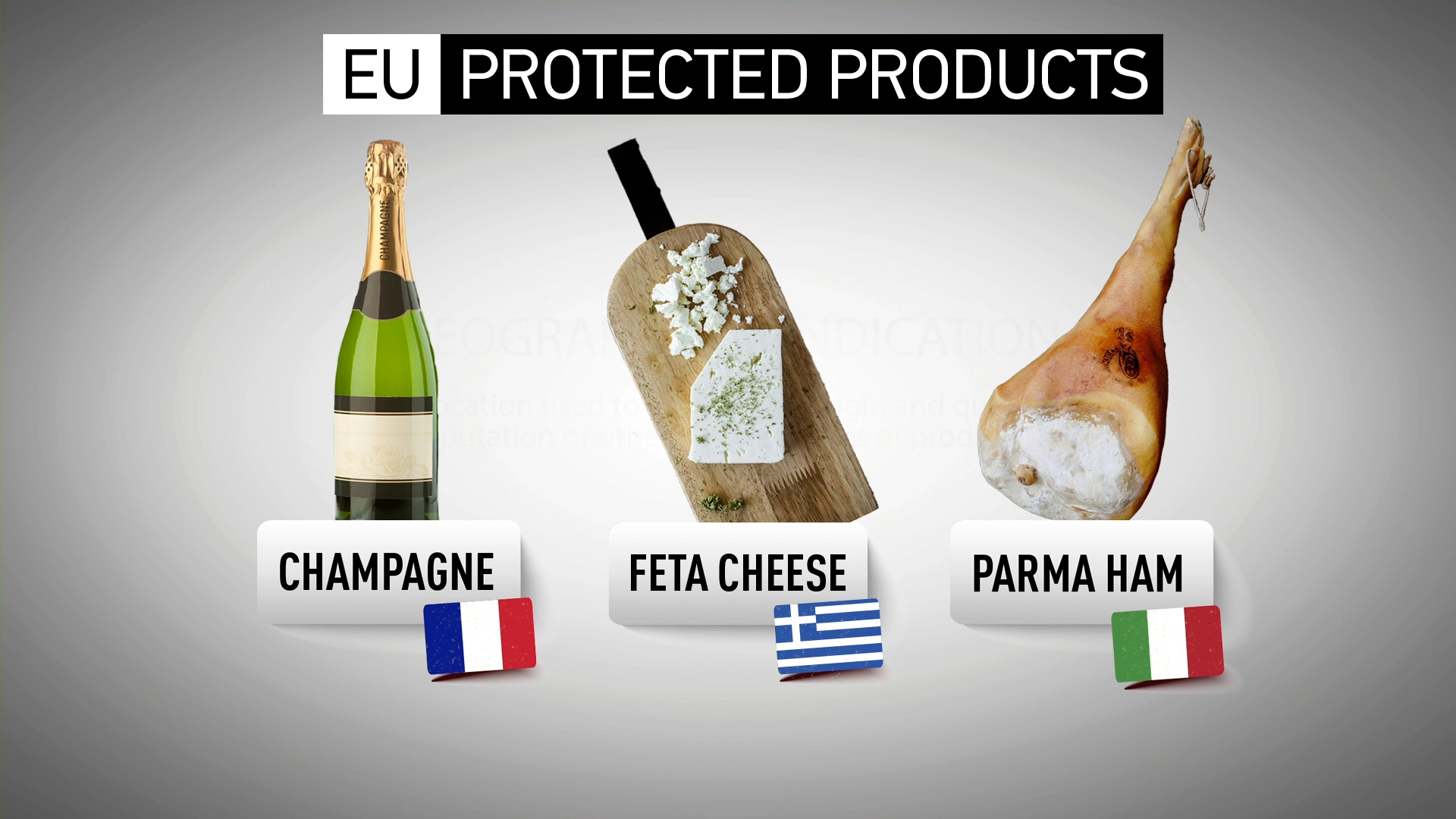02:36

Champagne, Feta cheese, Parma ham, Bayerisches Bier, Parmigiano Reggiano, Polish vodka, Irish whiskey: What do all these European products have in common?
Each one of them belongs to the proud cultural heritage of their country of origin, and as such, they're protected within EU law by "geographical indications" (GI).
But what exactly are those?
A geographical indication is used to identify a product with unique characteristics linked to their specific place of origin, with the aim of protecting this good from imitation and unfair competition.
GIs are considered intellectual property, and as such they both celebrate regional traditions and protect the rights of local producers on those goods.

CLICK: WHY THE ALPS FACE AN UNCERTAIN FUTURE
The long history of food as intellectual property
Countries have been trying to protect their regional products from international competition for centuries. A good historical example is Roquefort cheese, one of the world's oldest and best-known blue cheeses.
In 1411, King Charles VI of France granted the monopoly of production of Roquefort cheese to the people of Roquefort-sur-Soulzon, in Southern France, where the cheese had been produced for centuries.
When France introduced the "appellation d'origine contrôlée" ("controlled designation of origin") label to protect its food and wines in the early 20th century, Roquefort cheese was the first recipient of the new regulation in 1925.
Today, Roquefort cheese is protected by geographical indication as recognized by EU law, which introduced GIs in its legal framework back in 1992.
In 1995 geographical indications were given universal attention and protection under the World Trade Organization's TRIPS Agreement, to date the most comprehensive multilateral agreement on intellectual property.
Today the EU has more than 3,300 products registered as GIs, and around 1,250 non-EU GIs are protected within the bloc thanks to bilateral agreements with other countries, like the one signed with China in September, agreeing to protect 200 food products with GIs mutually recognized by both parties.

Some of the most famous European products protected by GIs. /CGTN Europe
Some of the most famous European products protected by GIs. /CGTN Europe
Which products can be protected under geographical indication?
To be identified with a geographical indication, a product must originate in a specific place, region or country and have a given quality, reputation or other characteristic related to that geographical origin. Also, at least one step of the production must take place in that particular area.
The name is also important: it must be unique and at the same time immediately recognizable as belonging to that specific item, and it must use the language which is or was historically used to describe it.
Protection by GI can be requested by a group of producers of the product or by a national competent authority, for example the government of a country.
Why have geographical indications?
Geographical indications aim to defend the quality and diversity of certain products, which have a long tradition linked to their place of origin, from imitation and unfair competition, which would compromise their reputation and damage their image internationally.
"European Geographical Indications reflect the wealth and diversity of products that our agricultural sector has to offer," said EU agriculture commissioner Janusz Wojciechowski. "Producers' benefits are clear. They can sell products at a higher value to consumers looking for authentic regional products.
"GIs are a key aspect of our trade agreements. By protecting products across the globe, we prevent fraudulent use of product names and we preserve the good reputation of European agri-food and drink products. Geographical Indications protect local value at global level."
According to a recent study, GIs are a real treasure for EU member states: EU products protected by GIs represent a collective sales value of around $88.5 billion. Of this, more than a fifth came from exports outside the EU.
The benefits of GIs extend from producers to customers, who can rely on better quality, certified products.
Both the EU and China expect to benefit from the latest agreement which will come into force next year. It will later expand to cover an additional 175 products from both sides.
Cover image: Atlantide Phototravel/Getty Creative

